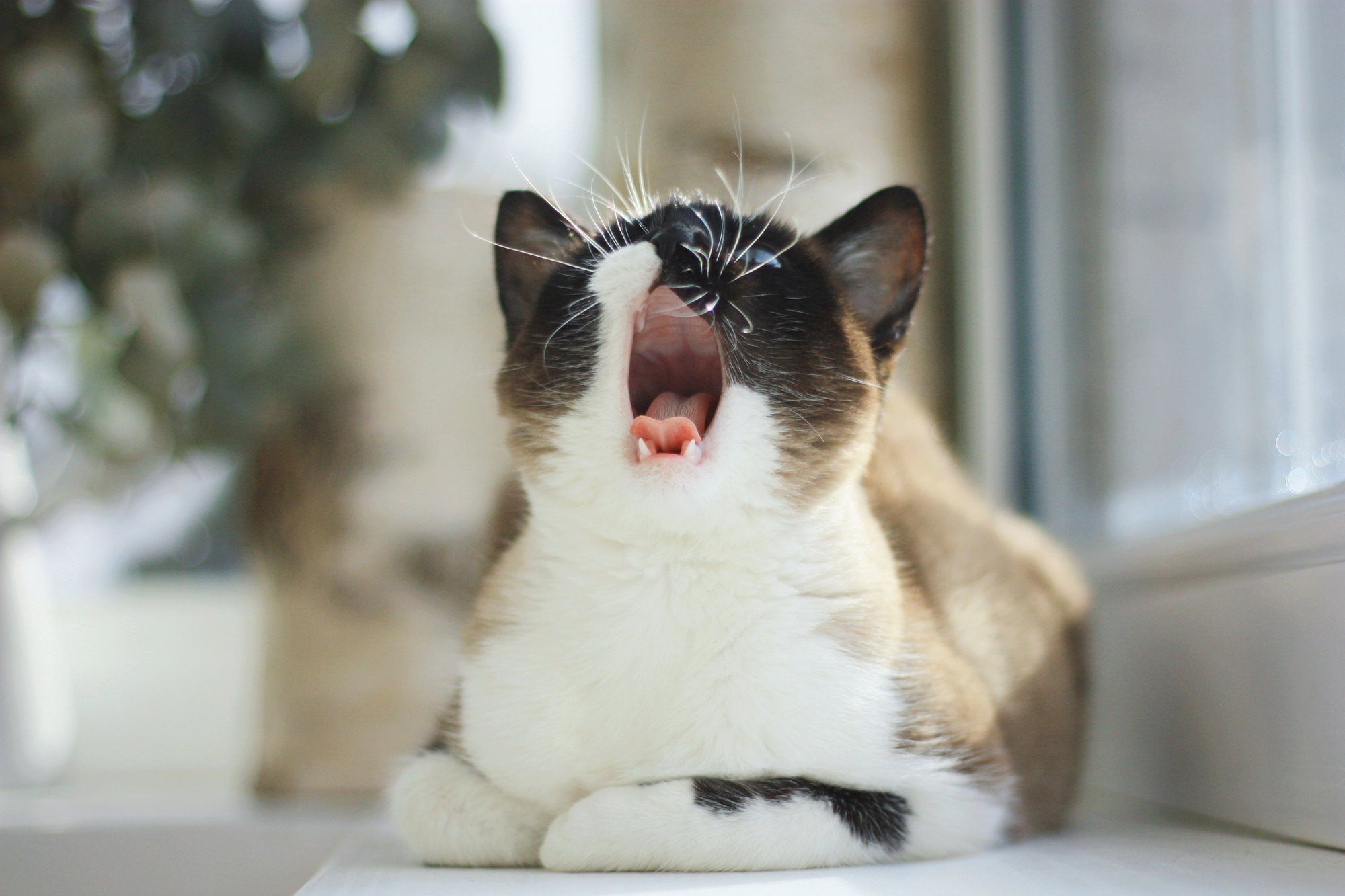September 1, 2023 |6 min read |Veterinarian Reviewed
Hairballs... Normal Cat Quirk or Health Warning Sign?

Written by

Despite our best efforts to always find our fur babies cute and adorable, it can be pretty disgusting when Kitty retches up a hairball – especially if you step on that nasty ball of fur and stomach contents in the middle of the night! But as a pet parent, you know occasional hairballs are just part of having a magnificent feline in your life.
But what if Kitty is hawking them up daily? Is that normal? Or is it a sign that Fluffy needs to visit the vet?
Here's what you need to know about hairballs and how you can help Kitty to live a healthier, hairball-free life.
What Are Hairballs?
Our "Word of the Day" today is trichobezoar! A trichobezoar is a lump of hair in the stomach or intestines. It's made up of a mat of hair fibers, saliva, and stomach contents, which is what gives the gloppy mass its extreme ick-factor.
Disturbingly, trichobezoars are a lot like the clogs of hair you find in your shower drain. Unfortunately, though, you won't be able to install a drain filter in Kitty's stomach.
Once a ball of hair forms, there's only one way for Kitty to get rid of it – and it usually involves you waking up in the middle of the night to her retching.
Cat Litter That Prioritizes Their
Health & Your Happiness.
for 20% Off + a FREE Catnip Toy
Why Do They Occur?
Thanks to papillae, the backward-facing tiny projections on Kitty's tongue, anytime your furry friend grooms herself, loose hairs get caught on her tongue. Those hairs make their way down Kitty's throat and into her tummy.
Fur mostly consists of keratin, which isn't digestible, so Kitty's body must pass it one way or the other. Normally, individual hairs are able to move freely through her digestive system and – there's no way to put this delicately –come out the other end.
When the hair doesn't pass through her intestines like usual, it remains in her stomach and accumulates over time. The result is the hairball we pet parents have come to know (and despise) so well.
Are Hairballs a Health Warning Sign?
According to the experts at Cornell University's College of Veterinary Medicine, hairballs may indicate a more complex health problem when coupled with other health warning signs.
Once weekly hairball-retching sessions are normal, but daily occurrences are something to be concerned about. Excessive grooming that produces frequent hairballs can also be a sign that Kitty suffers from a skin condition.

If you notice that Kitty looks a little rough lately – with thinning patches of hair, red blotches on the skin, or missing patches of fur – it could be due to a flea infestation or allergies. Your vet will be able to determine exactly what the problem is and treat it accordingly.
Bringing up a hairball is one thing, but if Kitty also vomits and refuses to eat, it can be a sign of gastrointestinal problems. Because a hairball can become an intestinal blockage, symptoms like these have to be taken seriously.
Also, because hairballs are so common for cats, some pet parents may overlook frequent hacking as a natural part of cathood, but it can actually be a sign of a respiratory problem such as asthma. If the peace of your house is often interrupted by Kitty's coughing, then a visit to the vet is definitely in order.
To get some extra insight into your kitty's internal health, switch to PrettyLitter. Our health-monitoring, odor-blocking, light-weight, dust-free litter changes color to indicate possible problems with your fur baby's health.

How Can We Prevent Them?
The good news is that you can often prevent or drastically reduce hairballs with a little effort on your part. According to PreventiveVet, there are four different methods for keeping Kitty healthy and hairball-free.
Daily brushing is one way to keep Kitty's hair on a brush and not in her stomach. Brushing her regularly will cut down on the amount of hair she ingests and the nightly retching sessions so that everyone sleeps better. Hurray!
Deshedding tools are especially helpful to keep Kitty's fur sleek, particularly if your fur baby hates the hairbrush. They are more effective than normal brushes at removing Fluffy's undercoat. Bonus: a deshedding tool reduces the loose hairs you find all over your furniture and clothes!
Regular trips to the groomer might not be on Kitty's list of favorite things to do, but it can save you from fighting with her over taking a bath. Professional grooming helps keep Kitty's skin in good condition and her fur silky while removing the build-up of loose hairs.
A hairball diet is an option if Kitty's hairballs happen frequently – like multiple times a week. There are many different types of cat food designed to reduce the occurrences of hairballs, but any diet changes should be approved by your vet first.
Daily grooming sessions with your little one can also be a great opportunity for you to assess how she's doing physically and make sure there are no skin conditions, fleas, or other health problems that need to be addressed.
So how often does your kitty retch up a hairball? Weekly? Monthly? Let us know the gruesome details in the comments below! As always, if you have any questions, we're here to answer them.








